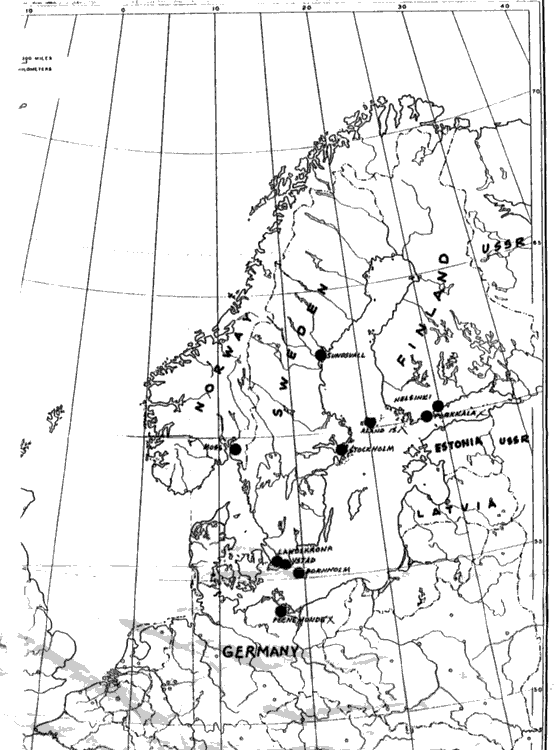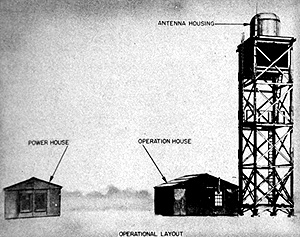7 Dec
44 - First flight of JB-1 at Eglin (Northrop Flying Wings)
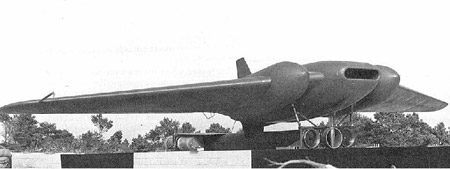
Dec 44
- Chelomei-designed Soviet V-1 copies (10X or 10Ch) begin flight testing
in launches from Pe-8 bomber aircraft, since catapult launch ramps had
yet to be copied

Dec 44
- Northrop proposes redesigning JB-1 as JB-1B, to use single V-1 pulsejet
engine housed in cast magnesium fuselage with integral explosive compartments
adjacent engine
1945
15 Jan
45 - last German V-1 launch from airplane
18 Jan
45 - Chelomei 10X full production ordered
late Jan
45 - Spaatz reports that Blizna joint tech intel mission had been
of "inestimable value." (Sharing Secrets With Stalin)
Early
45 - initial Chelomei 10X ready for operational use in air-launched
form but decision made not to carry out attacks due to inaccuracy and
risk to launch pilots [?] (The V-1 and its Soviet Successors)
14 Feb
45 - last V-2 test at Peenemünde
17 Feb
45 - Peenemünde evacuated (Wegener, Peenemünde Wind Tunnels)
(May not be correct)
19 Feb
45 - JB-1 redesignated JB-10
25 Mar
45 - first known use of rocket-powered Kamikaze aircraft Ohka
by Japanese against US ship
27 Mar
45 - last V-2 strikes England
29 Mar
45 - last V-1 strikes England
end of
Mar 45 - Chelomei 10X in production at rate of 15 per day (The
V-1 and its Soviet Successors)
6 Apr
45 - JB-10 flights begin at Eglin - using single V-1 pulsejet
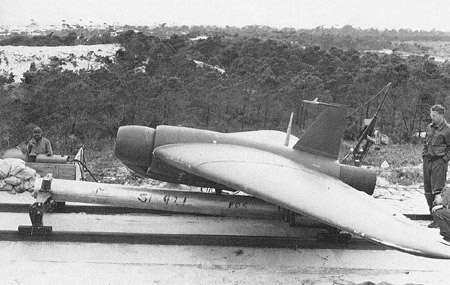
12 Apr
45 - US destroyer Mannert L. Abele sunk by Ohka kamikaze
rocket plane
Apr 45
- USN CNO establishes Project DERBY at Pt Mugu, CA, to train personnel
in launching of JB-2 Loon V-1 copy
Apr 45
- Chelomei 10X long-range test flights begin at test range in Uzbekistan,
from Tashkent to Syr Darya (The V-1 and its Soviet Successors)
5 May
45 - Peenemünde occupied by Soviets. Americans had been there first
(Siddiqi)
24 May
45 - first team of Soviet experts flies to Berlin to begin to inspect
German rocket installations. Studies Nordhausen, arrives at Peenemünde
by end of month (Siddiqi)
5 Jun
45 - first successful JB-2 flight, Wendover AAF Utah [?]
[http://www.hill.af.mil/museum/photos/wwii/v-1.htm]
Plans supposedly in place to use JB-2s during Operation OLYMPIC, the invasion
of Japan
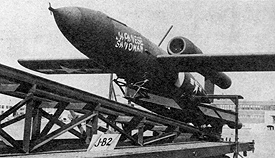
Jul 45
- "Institute Rabe" set up by Soviets at Bleicherode,
von Braun's former headquarters, near Nordhausen (just across border of
Soviet zone from Gottingen), under Boris Chertok, to coordinate
recovery of rocket components, documents, personnel. Eventually it will
have about 1000 personnel, half Soviet, half German workers, plus about
50-60 Peenemünde veterans (Harford, quoting Chertok, in Korolev)
25 Jul
45 - Pobedonostsev sent to Institute Rabe
Aug 45
- 63 10X missiles have been launched in Uzbekistan range (The V-1 and
its Soviet Successors)
9 Aug
45 - Soviets send "Special Technical Commission"
on rocket exploitation ("OTK" - under Chief Artillery
Directorate) to eastern zone of Germany under great secrecy to set up
recovery effort (Siddiqi)
8 Sept
45 - Sergei Korolev flies to Berlin to become deputy head of
OTK. Rocket engine designer Glushko arrives soon (Siddiqi)
mid Sept
45 - Helmutt Groettrup moves to Bleicherode to work with Institute
Rabe as senior former Peenemünde rocket scientist under Soviet control.
Had been a senior deputy in guidance and control group under Steinhoff
(Siddiqi)
3-15 Oct
45 - Operation Backfire: at Cuxhaven, on North Sea coast north
of Bremen. British reconstruct and launch three V-2s using German technicians.
Soviet representatives invited to observe 15 Oct launch - Korolev,
Pobedonostsev, Glushko. Korolev is excluded from actual launch area
by senior US officer present. Von Karman observes on US side
early
fall 45 - "Operation Ost" established to lure more capable
rocket experts to Soviet zone (Siddiqi)
Nov 45
- US Navy Bureau of Aeronautics study for "High-Altitude Test Vehicle"
single-stage-to-orbit satellite rocket using hydrogen fuel

1946
7 Jan
46 - first launch of USN Loon V-1 copy at Pt Mugu, marks beginning
of Navy cruise missile development leading to Regulus ship-launched cruise
missile
Jan 46
- JB-10 canceled
24 Jan
46 - UN General Assembly creates UN Atomic Energy Commission
9 Feb
46 - Strident Stalin speech rattles West with statement that communism
and capitalism cannot coexist. Stalin commits 5-year plan to "preparing
USSR for any eventuality." One of Forrestal's colleagues calls speech
"Declaration of WWIII."
 - Josef Stalin
- Josef Stalin
21 Feb
46 - Von Braun Peenemünde Paperclip team arrives at Ft Bliss, TX (Encyclopedia
Astronautica)
22 Feb
46 - The charge d'affaires of the US embassy in Moscow, George
Kennan, is asked by the State Department to prepare an analysis of
the new attitude of the Kremlin. He responds on February 22 with an eight
thousand word telegram describing Soviet Marxism as a "fig leaf"
for a cruel dictatorship bent on the overthrow of western democratic capitalism.
To Kennan, there seemed little prospect of reaching a "modus vivendi"
with the USSR, which would use all its resources to subvert the west from
within by means of underground elements controlled from Moscow. The "Long
Telegram" caused an uproar in Washington. Forrestal made it required
reading for senior military officers; even Truman got a copy
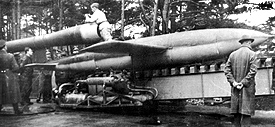


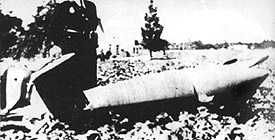
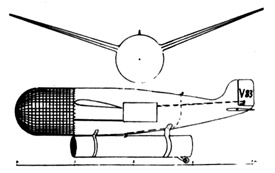
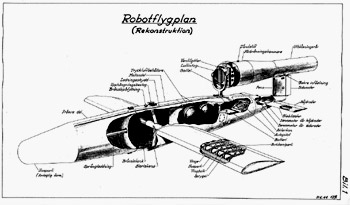
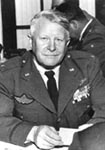 - Bernt Balchen
- Bernt Balchen






 - Josef Stalin
- Josef Stalin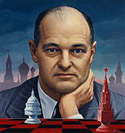
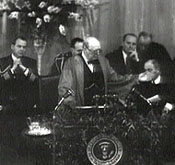 - Winston Churchill
- Winston Churchill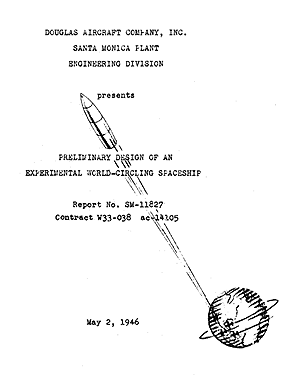
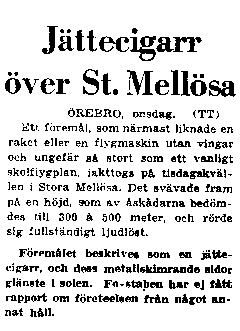

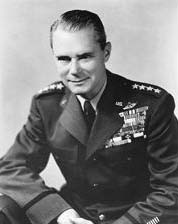 - Lt Gen Hoyt Vandenberg
- Lt Gen Hoyt Vandenberg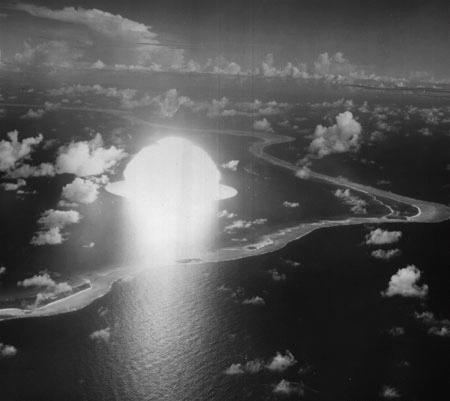
 - V. Molotov
- V. Molotov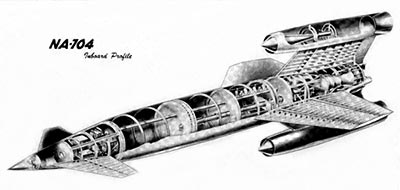
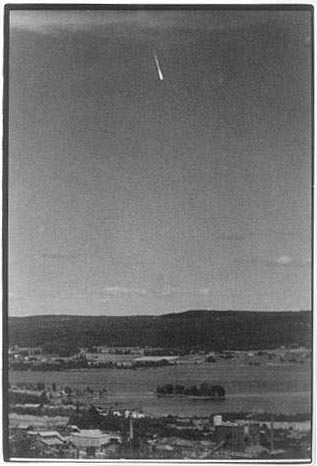
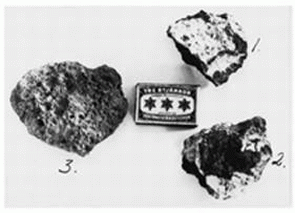

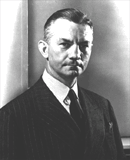 - James Forrestal
- James Forrestal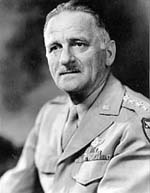
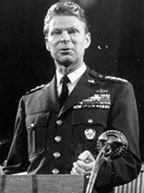

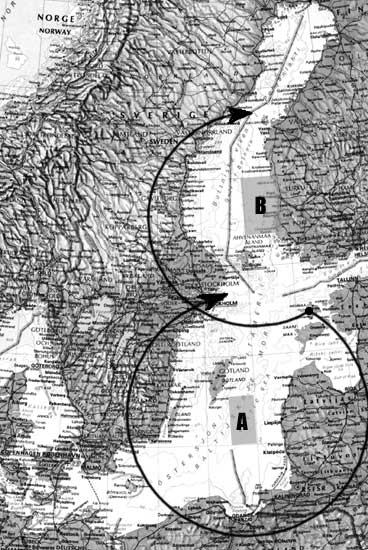
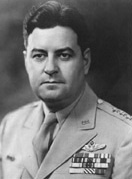 - Gen. LeMay
- Gen. LeMay